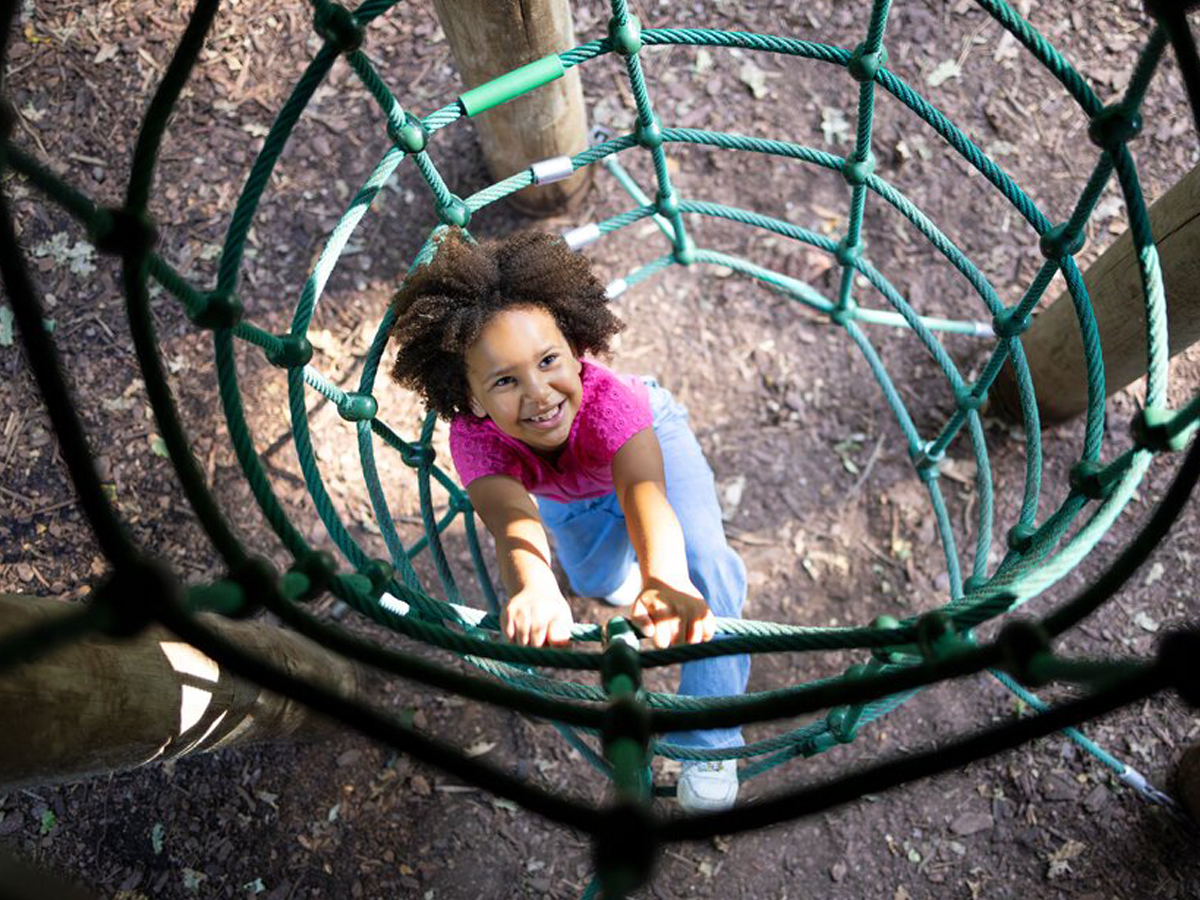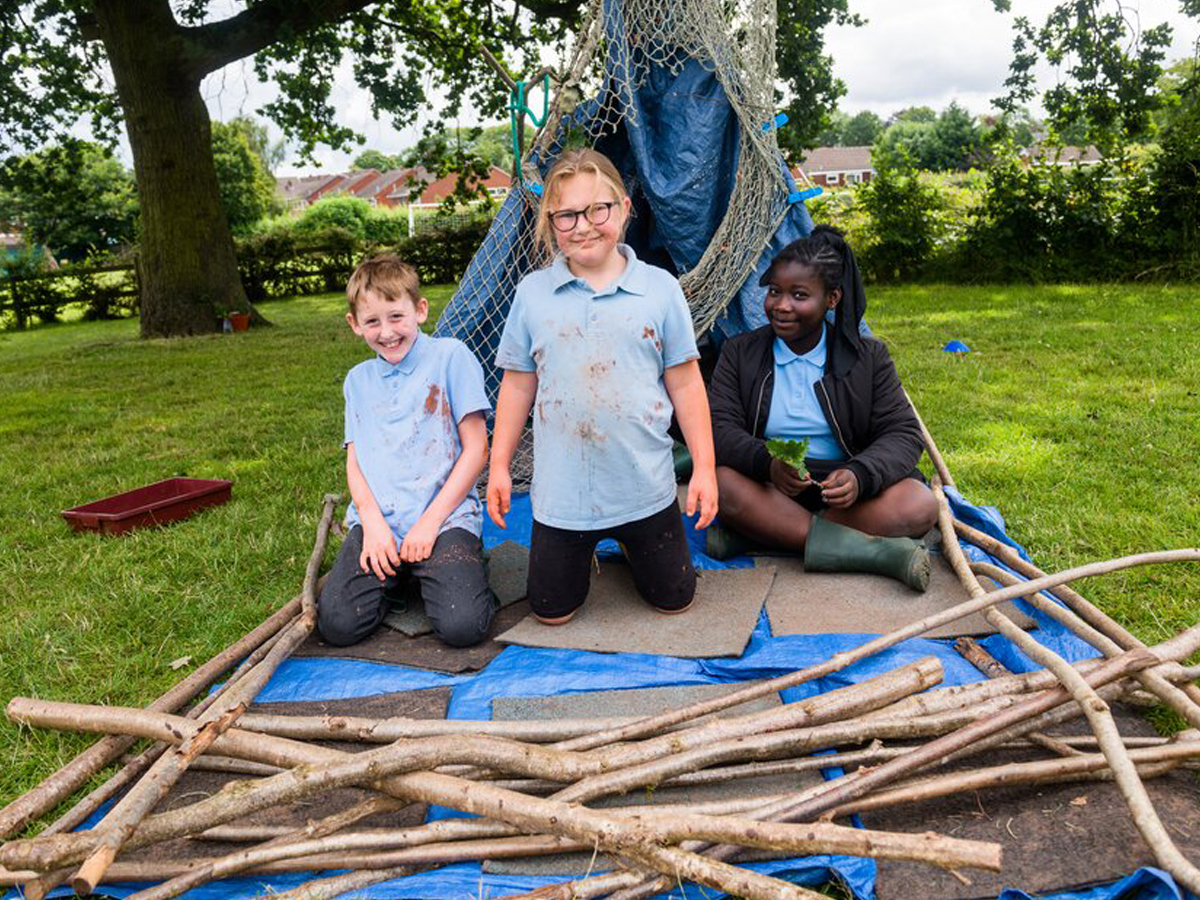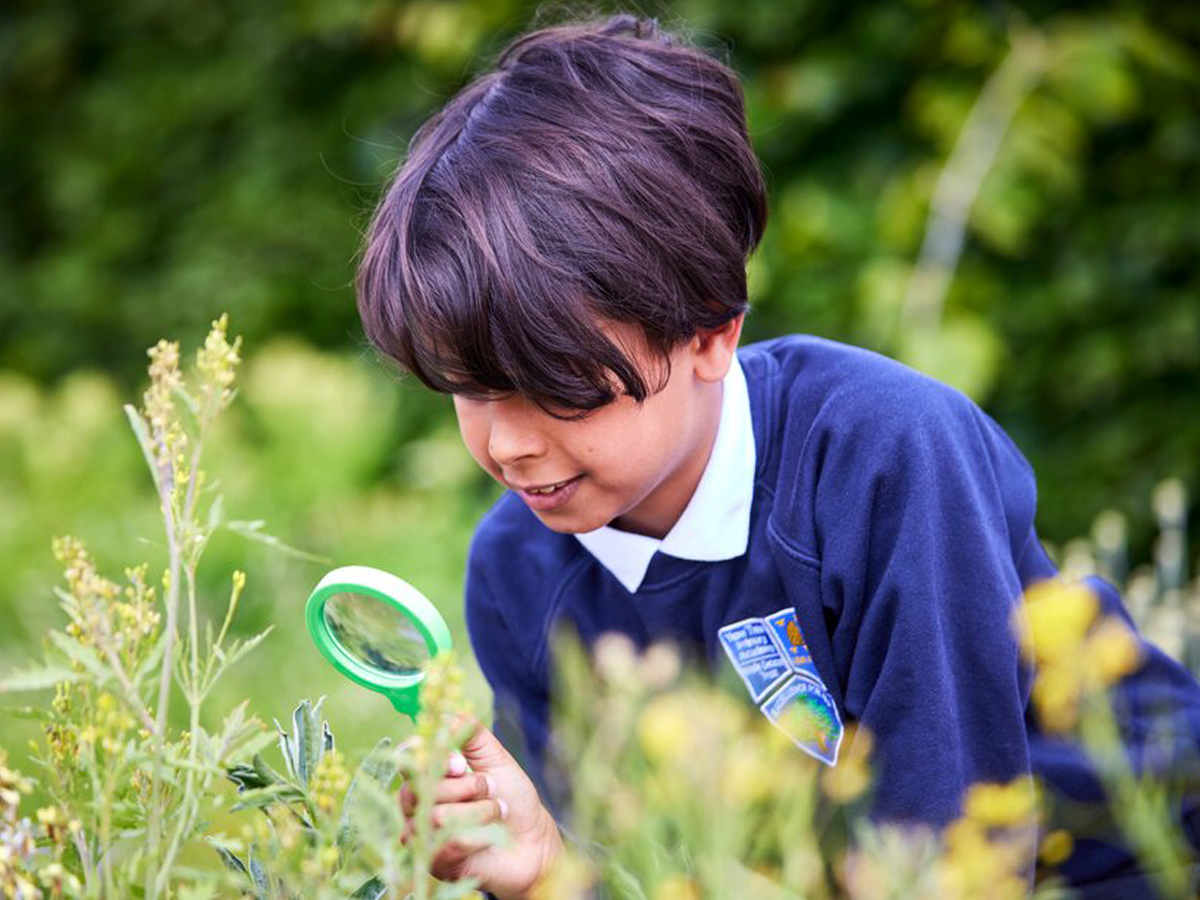Nature-based discovery: a Nature Park guide
If teaching outdoors is new to you, it can feel daunting. The National Education Nature Park programme has been designed to require minimal extra resources and equipment, and no specific nature knowledge or experience is needed from educators. However, you may have some questions when thinking about facilitating sessions in nature – the below guidance provides reassurance and support to taking the first steps to learning outside.
Why take learning outdoors?
Here are just a few benefits to taking your sessions outdoors and engaging learners in nature-based discovery:
- That is where nature is – not in a textbook or on a screen!
- Learning outdoors can improve engagement – some learners respond better outdoors
- Learners can gain real-life experiences outside
- It provides an opportunity for children and young people to lead their own learning through enquiry, allowing educators to facilitate, and enjoy finding out things together with learners
- It can improve the mental health of learners – and of staff
- We can gain lots of inspiration from the world around us
- Learners can ask and answer their own questions, developing resilience and perseverance
- It can be the start of a journey into green careers and skills

© RHS, Credit: RHS / Lee Charlton
What if we don’t have the space?
Review the space you have, however small. It might be that some of these spaces are half-filled with bins or are unsafe due to poor maintenance, so see if things can be moved around or prioritised for outdoor learning and play.
Take a look at the vertical space you have – walls, fences, hedges - look upwards as well as on the ground. You may be able to use these spaces for storage, seats, chalkboards or for a range of habitats. If you’d like to add structures, think about different layers and functions these could have: for example a raised platform could have storage, plants or play space under it, doubling the area you can use.
The next step is to think about timetabling the space you have, just as you might with a space like the school hall – who can use it when? How can you make sure everyone gets the chance to learn and play outdoors? You might also have public or community spaces nearby that you can use for activities, such as the local churchyard, a community garden or a space belonging to a local company.
Temporary seating might be taking chairs outside, providing seating mats made from yoga or camping mats, or using straw bales over which you might lay a tarpaulin when they get wet. Logs or upturned buckets make great seats too, and are easy to move into different arrangements depending on need.

© RHS, Credit: RHS / Edward Shaw
What about the weather?
The weather is often cited as a barrier to learning outdoors, but the changing weather through the seasons provides rich real-world learning resources. Whilst the rain might make you think twice about going outside, very hot, sunny days can be a challenge too. If taking your learning outside on a hot day, remind learners to take regular breaks for water and find shady places to work, as well as providing sun cream if possible.
Wet weather gear for learners will help you access outdoor space more often – and don’t forget staff need to have the right clothing too! Can you gather a store of spare clothes so that you can support those learners who need it? Use pencils outside on damp days rather than pens as these will still write when paper is a little damp.
Ice and snow can be challenging, but also a valuable learning experience and will encourage learners to modify their behaviour to negotiate the associated experiences (for example walking on icy ground). Do always check the forecast ahead of time and don’t go out if it is going to be very windy or a storm is brewing - safety comes first.
Weather and changing environmental conditions can also affect the information you can collect outdoors, but this can always be incorporated into evaluation and reflection at the end of your session. Did the weather affect what wildlife we could see, or what data we could collect? What do these findings tell us, or not tell us? Did we learn anything we didn’t expect to learn? What could we do differently if we did this activity again? For more information on promoting enquiry learning, take a look at our enquiry-based learning guidance.
Do we need lots of equipment to teach outside?
Even without any additional resources you can take learning outside. Keep it simple, use natural (free!) resources such as sticks and leaves, or kit you might use for other lessons such as PE cones and tape measures to mark out spaces. Nature Park activities have been designed to be low-resource and where possible enable you to make the most of basic materials you will already have in your classrooms. Clipboards are useful for collecting information outside, but you can also make mini ones from a piece of cardboard and a clothes peg that will work for lots of activities.
Do I need a qualification to take activities outdoors?
No – everyone who is a qualified teacher can teach outside. However, if you are planning on taking more complex activities outdoors such as building activities, do make sure whoever is leading the activity has the appropriate skills and knowledge to ensure it is carried out safely.
What if I’m not confident with my knowledge of the natural world?
Nature-based discovery promotes an enquiry-led approach, focusing on learners answering their own questions – you can support them in finding the best resources and ways for them to answer questions themselves. You don’t always need to know the answer!
For example, if you are spending time outside exploring your site, young people might ask you the names of trees, specific plants or insects. Can you take some identification guides with you, or extend the activity with a research project and ask your learners to identify things together? Some examples of free, online guides and tools are suggested below:
- Natural History Museum: guide to common UK insect and other terrestrial invertebrate groups
- Campaign for School Gardening: Spotter guides
- RHS: Identify your plant

© RHS, Credit: RHS / Mark Waugh
What about health and safety outside?
It is important that everyone is aware of the wonderful learning opportunities outside of the classroom and these should not be reduced through excessive health and safety measures. Most of the activities suggested within the National Education Nature Park will not require any further paperwork beyond the annual permissions from parents and carers, and standard health and safety measures in place for regular outdoor activities such as playtime and PE. Things to consider when taking learning outdoors include:
- Levels of supervision
- The environment – hazards, identifying the area you want to use for an activity, setting some clear guidelines for learners when outdoors
- Taking care around wildlife and animals – for learners’ safety as well as the wildlife!
- Plants and fungi – teaching learners not to eat plants they find or touch fungi
- Appropriate footwear and clothing
For more information on health and safety guidance, take a look at our Health & Safety considerations.
How do I keep learners focused outside?
Managing learner behaviour in an outdoor setting can be out of our comfort zone, and can feel more daunting than when we are inside a classroom. However, some learners will actually respond better outdoors and be more engaged with learning outside.
Make sure you set clear boundaries for behaviour and the space learners can use. Start with short sessions outside so that you feel confident in taking your learners outdoors. Have a gathering space to meet and a signal to bring everyone back together - make this an everyday space to learn in, rather than something unusual. Some learners will be more inquisitive and more likely to ask questions and participate in the creation of their own enquiry-based learning when they are interested or care for the topic. The activities in the Nature Park engagement programme provide open questions, research and reflection opportunities that encourage learners’ natural curiosity.
Isn’t this going to take me too long?
The bonus of teaching outside is that it can be as simple as moving the location of your session or activity, rather than it being an additional area to cover. Often learning outside is hands-on and very memorable so learning can be more impactful when you take it outside.
Getting ready to go outside may take longer initially, but once learners build up a routine and practice a few times, it’ll become quick and easy. You can also save time by meeting outdoors at the end of break, or finishing your lesson before break or lunch outside so you save a journey to and from your classroom.
How do I include all my learners?
All learners, whatever their abilities, ages, strengths and interests, should be able to access outdoor learning. This does not mean everyone will be able to access every activity in the same way, but they can all take part in nature-based learning in a positive way. All learners are different and will be engaged and enthused by different things, and all educators are familiar with creating sessions that meet these different needs. Teaching outdoors is no different! Find ways to challenge different learners, whatever their ability or learning style. Nature Park activities are designed to be collaborative, non-competitive and adaptable, encouraging peer support, teamwork and discussion – working pairs or groups can help to make activities more inclusive and ensure every child and young person can contribute.
Everyone may not follow the same route to arrive at an outcome or answer, so celebrating these differences through sharing and peer support will help to make every learner feel included. You may like to adjust the size of a group depending on the topic, task and learners’ needs. When working outside and in nature, there could be someone within the group who knows the answer and provides peer support, making some learners feel more comfortable with asking questions. When possible, have spare equipment and resources ready in case any learners prefer working on their own.
For ideas on evidencing learning and reflection of learners, take a look at our guidance on capturing impact on children and young people.
Adapted from Teaching the Primary Curriculum Outdoors by Learning through Landscapes.
Thumbnail image: © RHS, Credit: RHS / Helen Yates